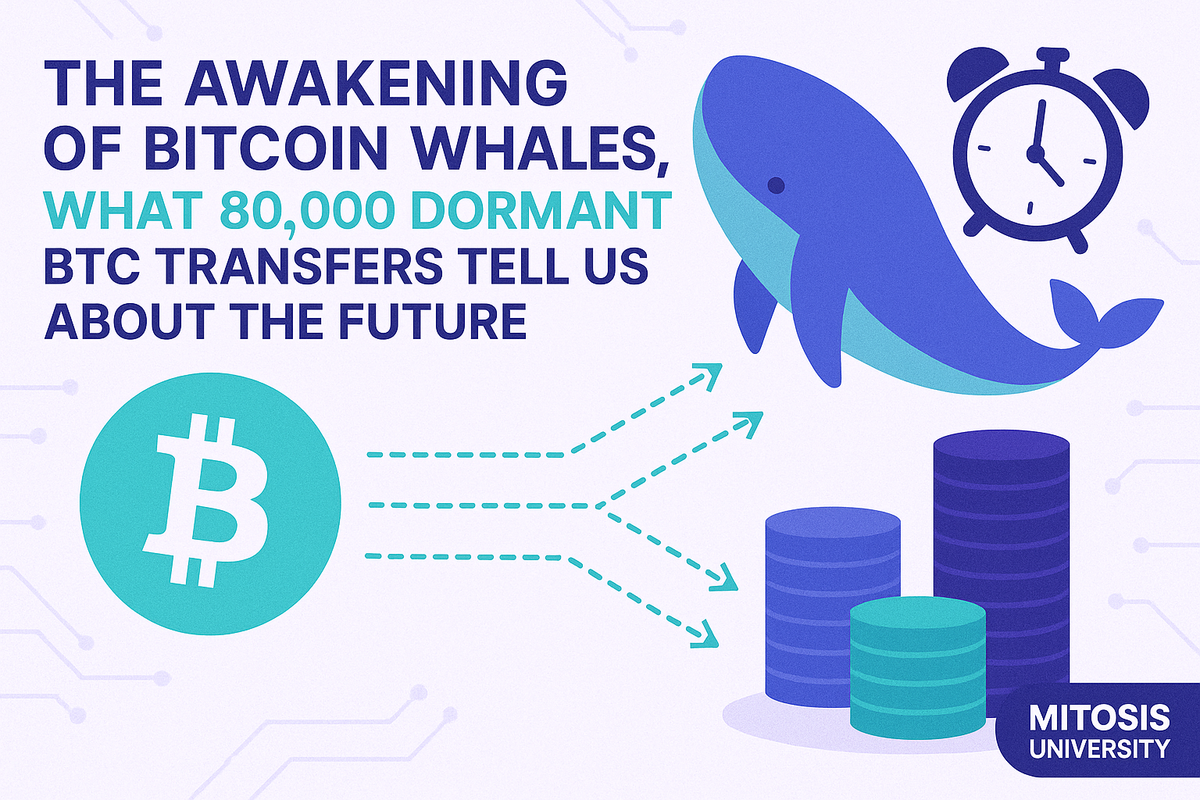The Awakening of Bitcoin Whales, What 80,000 Dormant BTC Transfers Tell Us About the Future

Fourteen years of silence shattered with a single transfer. On July 4, 2025, the crypto world was stunned by the reactivation of eight Bitcoin wallets untouched since 2011—commonly known as “Satoshi-era” wallets. These long-dormant addresses moved an eye-popping 80,000 BTC, now worth over $8.6 billion.
What made this more than just a numerical marvel was what didn’t happen: no major sell-off, no catastrophic price plunge. Instead, the market held steady—and a deeper story emerged. This was not a panic-fueled move, but a deliberate, strategic shift rooted in evolving security threats and modern blockchain best practices.
In this article, we unpack why this move matters, what it reveals about the long-term holders of Bitcoin, and what it signals about the future of digital asset security.
Dormant No More: Why These Wallets Moved
A Security-First Move, Not a Sell-Off
Initial speculation around the $8.6 billion BTC movement sparked fears of a major liquidation event. But blockchain intelligence firms like Arkham Intelligence quickly clarified that the coins weren’t headed to exchanges. Instead, they were transferred to modern SegWit (bc1q) addresses—optimized for lower fees and enhanced security.
This migration was interpreted as a proactive response to two growing concerns:
- OP_RETURN Spam Attacks: Recent blockchain spam targeting legacy wallets may have prompted the owner to reinforce their defenses.
- Quantum Computing Threats: With quantum computing on the horizon, the risk of current cryptographic standards being compromised is gaining urgency. The whale’s decision reflects an awareness of this looming challenge.
A Rare Glimpse into Bitcoin’s Early History
These wallets trace back to April and May 2011, when Bitcoin traded between $0.78 and $3.37. Their combined original value? A modest $217,800. Today, they’re worth 14 million percent more. This kind of long-term conviction isn’t just rare—it’s nearly mythical.
The “Sleeping Beauty” awakening of these wallets disproves the common assumption that early BTC is permanently lost. Instead, it shows that early adopters may still be monitoring and actively managing their holdings—albeit from the shadows.
Signals for the Market: More Than Just a Technical Shift
Institutional Maturity Meets Whale Strategy
The market initially reacted with a 2% dip, but quickly stabilized, suggesting a maturing investor base capable of distinguishing between custodial reshuffling and sell-side risk. On-chain data confirmed this shift: no significant exchange inflows, and no large-scale selling activity.
This event exemplifies what analysts are calling the “Great Bitcoin Power Shift”—a trend where early whales are securing, not selling, while institutions continue accumulating. This reallocation of ownership may lead to lower volatility and increased long-term price stability.
SegWit: A Modern Security Standard
By moving funds to SegWit addresses (specifically the Bech32 format), the whale aligned with current best practices in Bitcoin custody. Key advantages include:
- Lower Transaction Fees: SegWit transactions consume less space in each block, reducing costs.
- Better Scalability: More efficient transactions mean improved throughput across the network.
- Enhanced Security: SegWit reduces the risk of certain attack types, including transaction malleability.
This move signals a broader shift in the ecosystem—an endorsement of more modern infrastructure and the importance of ongoing security upgrades for digital asset holders.
Conclusion
The reactivation of eight Satoshi-era wallets transferring 80,000 BTC was not a prelude to market chaos but a masterclass in proactive crypto asset management. This whale's decision to upgrade to secure SegWit addresses highlights the importance of evolving with the technological and threat landscape—especially as quantum computing looms on the horizon.
Key Takeaways
- Strategic, not reactive: This was a planned security move, not a sell-off.
- Quantum computing is no longer just a theory: It’s influencing billion-dollar decisions today.
- Bitcoin’s market is maturing: The restrained response to this transfer shows increasing investor sophistication.
Looking Ahead
This event raises compelling questions for the crypto community:
- Could more dormant wallets soon awaken?
- How quickly will the industry adopt quantum-resistant solutions?
- Are we entering a new era of institutional-led Bitcoin ownership?
One thing is clear: even after 14 years, the pioneers of Bitcoin aren’t cashing out—they’re locking in. And in doing so, they’re setting a new gold standard for long-term digital wealth preservation.

Comments ()